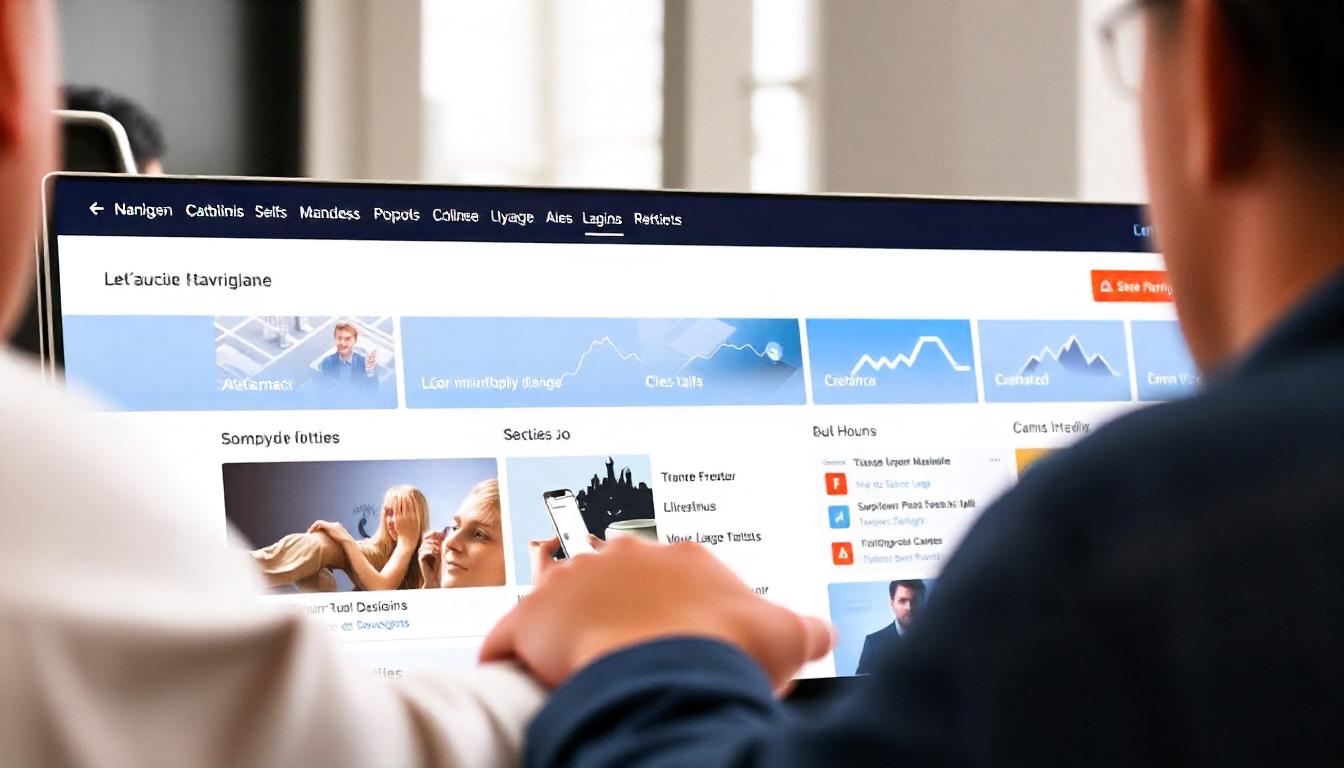Discover how efficient navigation improvesuser experiencereduces bounce rate and boosts SEO. Optimize your site now!

Importance of navigation
Have you ever left a website because you couldn't find what you were looking for? Ineffective navigation can frustrate users and negatively impact their overall experience. Therefore, understanding the importance of navigation is essential to improving user experience, reducing bounce rates, and driving higher rankings. search engines.
User experience is one of the crucial elements in website design. Fortunately, navigation plays a central role in this experience. By integrating clear and intuitive navigation elements, you'll make it easier for visitors to interact with your content, which can lead to increased appreciation of your services or products.
Navigation definition
Website navigation consists of elements such as menus, search bars, and links. These elements allow visitors to explore content and understand the relationships between different pages. A good navigation architecture facilitates the user's journey, leading them to the information they are looking for quickly and efficiently.
Key navigation elements
- Menus Menus: Menus are often the first thing users notice. They need to be clear and well structured.
- Search bars An effective search bar helps users find what they're looking for quickly, especially on sites with a lot of content.
- Links Internal links are essential to guide users to related pages, encouraging exploration.
Navigation types
There are several types of navigation, each with its own characteristics and advantages. Familiarizing yourself with these types will help you better design your website's navigation.
Global navigation
Global navigation consists of the main menu, which is visible on every page of the site. This type of navigation must be simple and coherent to avoid losing users.
- Benefits Easy access to the main sections of the site.
- Examples Horizontal or vertical menus displaying the site's different categories.
Local navigation
Local navigation provides a more detailed structure, allowing multiple pages to be organized under subcategories. This type of navigation is ideal for sites with a large amount of content.
- Structure Presentation of sub-categories linked to the main categories.
- Use Enables users to navigate easily within specific sections.
Additional navigation
Additional navigation includes options such as guides, search functions and breadcrumb navigation bars. These elements offer users contextual guidance to help them find what they need.
- Functionality Helps guide users through their experience on the site.
- Examples Search filters, related product sections, etc.
Contextual navigation
Internal links embedded in content encourage users to explore further. This not only helps to keep visitors on the site longer, but also promotes SEO by linking pages together.
- Advantage : Increases time spent on site and improves engagement.
- Implementation Add links to relevant articles or products in the text.
Best navigation practices
To optimize the user experience, there are several best practices when it comes to navigation. Here are a few key tips you can implement to ensure your site delivers a seamless experience.
1. Prioritize clarity and simplicity
Clarity is fundamental to good navigation. A simple structure allows users to move around easily and find what they're looking for without confusion.
- Action to be taken Reduce the number of navigation options and limit sub-levels in the main menu.
2. Use descriptive labels
Link labels should clearly indicate their destination. Avoid vague terms and choose labels that precisely describe the content or page.
- Example : Prefer "Gardening products" rather than simply "Products".
3. Organize content logically
The way you structure content has a direct impact on navigation. A logical layout will enable users to follow a clear path to the information they're looking for.
- Recommended approach Classify content by theme or interest and create clear categories.
4. Ensuring mobile responsiveness
With the use of mobile devices soaring, it's imperative that your site is responsive. Navigation that works well on all devices guarantees an optimal user experience.
- Indicators : Regularly test navigation on various devices to adjust the design if necessary.
5. Highlight important elements
Identify the essential elements of your site and highlight them to guide users. This includes clear calls to action and popular sections.
- Board Use contrasting colors and appropriate font sizes to draw attention to these elements.
Conclusion
A good navigation strategy is essential for improving the user interface, making the site more accessible and enjoyable to use. Paying careful attention to navigation can greatly contribute to user satisfaction and the effectiveness of your website. By implementing the best practices described, you can not only reduce bounce rates but also optimize your search engine rankings.
Let's invest in thoughtful navigation to transform your users' experience, and consequently increase your digital impact. Make sure that every visitor to your site leaves with a positive impression and a desire to return.
